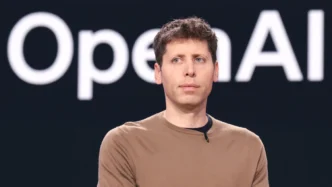Artificial intelligence is fueling a tech revolution—but it’s also quietly reigniting fossil fuel dependency. Behind the scenes of every AI model, chatbot, or image generator lies a massive energy footprint. As servers hum day and night to power these innovations, recent political shifts are steering this demand toward coal and natural gas—just when the world is trying to move on from them.
In early April 2025, the Trump administration signed a series of executive orders that reversed course on decades of clean energy progress. Among them were directives to reopen coal-fired power plants once destined for closure. The justification? AI’s skyrocketing electricity needs. Officials argued that renewables can’t keep up with AI’s demands, painting fossil fuels as the only “reliable” option.
But the implications run deeper. These orders also loosened mining restrictions on federal land and granted companies exemptions from pollution reporting requirements. That means less oversight for harmful emissions like mercury and benzene—all in the name of powering artificial intelligence.
This narrative—that AI needs coal—is gaining traction. And it’s reshaping national energy priorities in ways that could lock in fossil fuel use for decades.
How AI Is Powering Fossil Fuel’s Comeback
Coal, once on the decline, is being reframed as essential for the future of AI. Industry voices suggest up to 60% of new energy production may be redirected toward traditional sources like coal and gas. The shift is subtle, but powerful: the same companies touting AI’s ability to reduce emissions are partnering with oil and gas giants to accelerate their growth.
Microsoft, for instance, has positioned its AI tools as sustainability enablers. But it also supplies those tools to fossil fuel companies—offering them smarter ways to find, extract, and sell carbon-heavy products. These dual messages are muddying the waters around AI’s environmental promise.
While AI could help reduce energy waste and improve efficiency, its rising demand is being weaponized to justify expanding dirty energy. And with fossil fuel lobbyists embracing AI as a lifeline, we risk turning back the clock on climate progress.
Renewables Can Power AI—But Policy Needs to Catch Up
Critics of clean energy say it’s too inconsistent to power AI-scale infrastructure. They claim wind and solar can’t keep massive data centers running without interruptions. But these arguments ignore the facts: studies show renewables, with proper planning and storage, are capable of meeting even AI’s growing appetite.
The missing piece isn’t technology—it’s policy. Instead of investing in smart grid upgrades and energy storage, lawmakers are doubling down on what’s familiar. It’s a short-term fix with long-term consequences.
AI and renewables actually need each other. Smart algorithms can help utilities manage power flow, predict outages, and stabilize the grid—all essential for expanding clean energy. With the right support, this partnership could slash U.S. greenhouse gas emissions by 10% or more.
Four Ways to Decouple AI from Fossil Fuels
To keep AI from becoming a fossil fuel addict, stakeholders need to take action now:
- Smarten Up the Grid: AI can balance electricity supply and demand in real time. By automating energy distribution, it prevents overloads and allows data centers to run more efficiently—even during peak hours.
- Invest in Battery Storage: Battery systems store renewable energy for when the sun doesn’t shine or the wind doesn’t blow. Combined with AI, these systems release power when it’s most needed, cutting down reliance on backup fossil fuels.
- Cut AI’s Energy Hunger: AI doesn’t have to be wasteful. Tools like green software design, liquid cooling, and waste heat reuse can drastically reduce energy use in data centers—making clean power more than enough.
- Build Smart, Build Green: New data centers should be placed near wind and solar farms. This lowers emissions and operational costs, while reducing dependency on the grid’s dirtiest power sources.
Why We Must Advocate for Clean AI Now
If AI becomes a justification for more coal plants, the climate crisis will only deepen. Fossil fuel companies are eager to use AI’s rise as cover for their comeback—and without public pressure, policymakers may let them.
But there’s still time to shift the narrative. AI doesn’t have to destroy the planet—it can help save it. With the right investment and public-private support, we can build a clean energy future where AI thrives without dragging coal along for the ride.
It’s not just about emissions. It’s about choosing a future where innovation and sustainability go hand in hand—without sacrificing one for the other.













